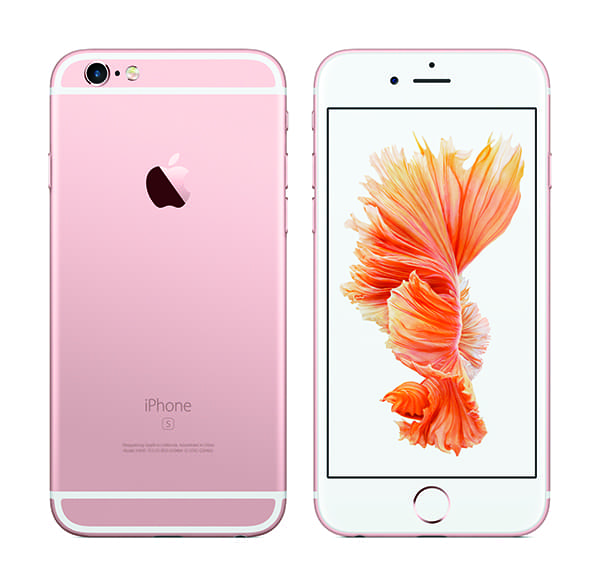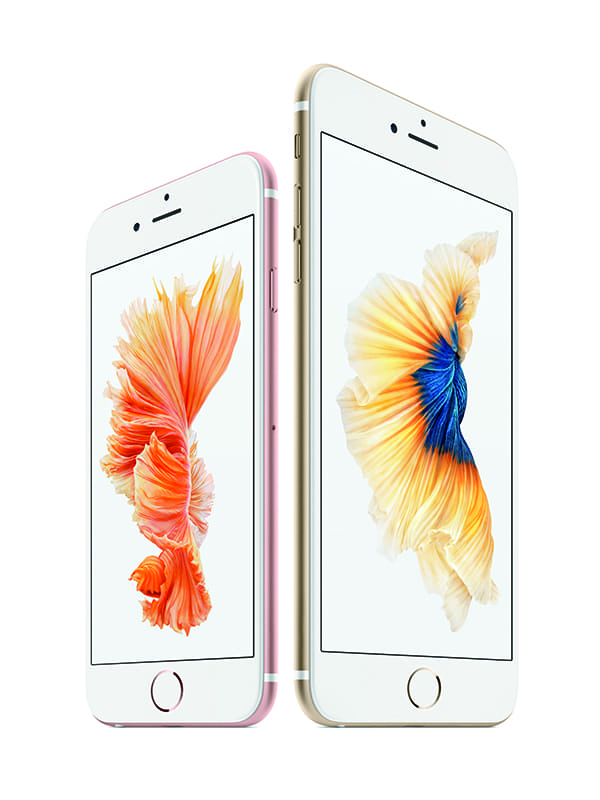iPhone 6S resolution
Apple has stuck with an 8 million pixel offering quite some time, despite almost all other phone manufacturers now offering much more.
Finally however, with the iPhone 6S and iPhone 6S Plus, the resolution leaps to 12 million pixels – bringing it more in line both with other mobile phones, but also with many compact cameras. Some models from Samsung and LG still boast a higher resolution than the iPhone, but that’s not necessarily an indicator of higher image quality.
Both the iPhone 6/iPhone 6 Plus and the iPhone 5S have an 8 million pixel resolution.
iPhone 6S lens
In terms of the lens, it seems that Apple has stuck with the same tried and tested five-element, f/2.2 optic, which is also found in the iPhone 6/Plus and the iPhone 5S.
Only the iPhone Plus models have optical image stabilisation for both stills and video, which helps keep image blur to a minimum – however this is due to the phone’s larger size making it trickier to keep perfectly still, so it’s not too big a problem that it’s missing from the smaller, regular iPhone models.
iPhone 6S autofocus
The iPhone 6 saw the introduction of Focus Pixels to the iPhone range. This works in a very similar way to phase detection autofocus and provides quick and accurate focusing.
For the new iPhone 6S models, these Focus Pixels are also incorporated into Tap to Focus, which should mean that an image snaps very quickly into focus as soon as you tap on the screen.

iPhone 6S Live Photos
One of the most exciting new innovations that the iPhone 6S and iPhone 6S Plus bring is “live photos”.
Capturing a couple of seconds before and after a shot is taken and then presenting them as a “moving” image may seem like a bit of a gimmick, but it can be great fun, especially for special occasions such as weddings, parties and birthdays.
At the moment, social media websites such as Facebook and Instagram can’t display these moving photos – but it’s said to be on the cards – so expect to see a lot more of these kinds of images as soon as sharing becomes available.
Even with the introduction of the latest operating system, iOS 9, it’s not possible for the older iPhone 6 and iPhone 5S models to create Live Photos.
iPhone 6S selfies
It’s a craze that’s showing no sign of going away – and Apple is specifically targeting selfie lovers with the improvements it has made to the forward facing camera on the iPhone 6S and iPhone 6S Plus.
The camera is 5 million pixels, compared with the 1.2 million pixels on the iPhone 6, iPhone 6 Plus and iPhone 5S and now features a “Retina Flash”. This flash works by increasing the screen’s brightness three fold to provide a temporary burst of light to improve your selfies. A pre-flash is designed to evaluate the lighting conditions around you to make the Retina Flash as close to natural daylight as possible – and therefore the most flattering.
Again, Apple seems to be playing a game of catch-up here with other mobile phone manufacturers who have already cottoned on to the selfies trend and have forward facing cameras with impressive specs. For instance, the LG G4’s front camera boasts 8 million pixels, while the Samsung Galaxy S6, Sony Xperia Z5 both feature 5 million pixel sensors like the iPhone 6S.
iPhone 6S Processor
The new iPhone 6S features an advanced A9 processor, which Apple claims provides the same computing power as a desktop computer. It’s this superfast chip that facilitates some of the iPhone 6’s more advanced camera features – including Live Photos, Retina Flash and high-resolution panoramas.
Meanwhile, the iPhone 6 and iPhone 6 Plus use an A8 processor, while the iPhone 5S features an A7 processor. Both are quick processors, but can’t quite compete with the latest A9 version.
The camera also has an Apple-designed image signal processor, which is claimed to deliver more accurate colours and sharper detail.

iPhone 6S 4K Video
4K is one of the hottest buzzwords in camera technology at the moment, and it’s already been found on some other camera phones on the market (such as the LG G4 and the Samsung Galaxy S6 Edge).
This super high-resolution video format delivers over 8 million pixels and brings the iPhone’s video capability right up to what is the current expected standard. It’s also possible to take 8 million pixel still images while recording 4K video – making images grabbed while capturing images much better than similarly captured images from the iPhone 6 and iPhone 5S.
The iPhone 6S Plus also includes Optical Image Stabilisation for video for the first time, which is designed to help when shooting video in low light conditions.
iPhone 6S panoramas
The panorama function for the iPhone 6S has been improved and is now capable of creating images up to 63 million pixels. The iPhone 6 and iPhone 6 Plus was capable of up to 43 million pixels, while the iPhone 5S topped out at 28 million pixels.








